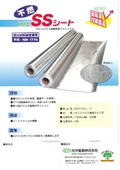[Over 1000 countermeasure achievements] A method to solve radio interference and reading errors of electronic tags (resolved through store renovations in apparel, specialty stores, supply chains, etc.) explained with photos. The construction points of non-combustible aluminum SS sheets (essential under interior restrictions) are clearly visible at a glance.
●One day, if the electronic tag (RFID) is affected by interference, it might be a good idea to use this guide to take countermeasures.
●The improvement measures implemented from the issues are published with photos.
●The construction procedure for the wall includes explanations with photos on the overlap of aluminum sheets, the pitch for tacker fixation, and the method of fixing with aluminum tape.
●Measures for leakage from outlets and embedded lighting fixtures that occurred during actual construction are also noted.
Due to the recent pressure on radio waves leading to frequency shifts and reorganization, as well as the increase in RFID users and other wireless devices, there are not a few cases where acquired radio interference and other issues arise from these effects.
The UHF band IC tags have a long communication distance of about 3 to 5 meters, which makes it easy to interfere when multiple IC tag readers are installed in close proximity. Particularly in Japan, the bandwidth allocated to UHF band IC tags is narrow at 2 MHz (for high-output types, while low-output types like handheld devices have 3 MHz), making it difficult to avoid interference.
Wireless sensor networks utilize the high radio reach of the 920 MHz band and accelerate wireless IoT solutions through high reliability via multi-hop communication.


Inquiry about this news
Contact Us Online
Related Documents
Related product
Related catalog(2)









